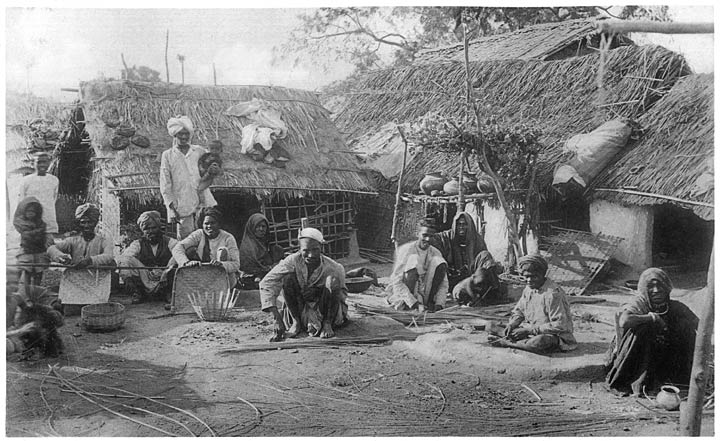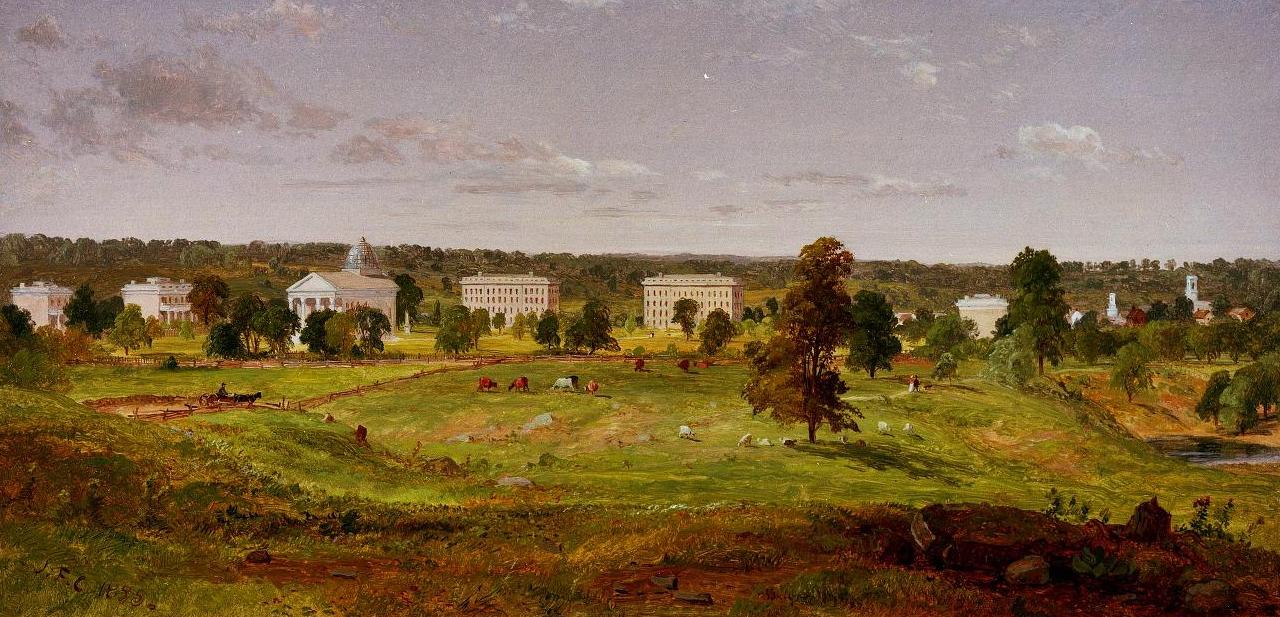|
Kavitha (village)
Kavitha is one of the 65 villages in the Borsad (Vidhan Sabha constituency) in Anand district of Gujarat, a state in Western India. History Prior to India's independence, as mentioned by Ambedkar in his writings, Kavitha was one of the villages known for incidents of caste based discrimination against Harijans. In 1935, when the untouchables of the village demanded from the Hindus of the village that their children should be admitted in the common school of the village along with other Hindu children, the Hindus were enraged at this outrage and took their revenge by proclaiming a complete social boycott. Ambedkar notes that the Garasia boys of the village threw Kerosene in the well used by the Dhedh and Chamar Chamar is a Dalit community classified as a Scheduled Caste under modern India's system of affirmative action. Historically subject to untouchability, they were traditionally outside the Hindu ritual ranking system of castes known as varna. ... people. References ... [...More Info...] [...Related Items...] OR: [Wikipedia] [Google] [Baidu] |
Borsad (Vidhan Sabha Constituency)
Borsad is one of the 182 Legislative Assembly constituencies of Gujarat state in India. It is part of Anand district. List of segments This assembly seat represents the following villages. This assembly seat represents the following segments, # Borsad Taluka (Part) Villages - Bhadran, Pamol, Kasumbad, Harkhapura, Bodal, Davol, Golel, Rudel, Nisaraya, Vasna ( Borsad), Kasari, Chuva, Uneli, Ranoli, Khanpur, Virsad, Jantral, Vasna ( Ras), Saijpur, Jharola, Vadeli, Alarsa, Pipli, Khedasa, Sisva, Ras, Amiyad, Banejda, Kandhroti, Kanbha, Divel, Kathol, Umlav, Valvod, Dhanavasi, Kinkhlod, Moti Sherdi, Nani Sherdi, Gorva, Kathana, Dali, Kalu, Badalpur, Kankapura, Dahewan, Salol, Gajana, Kothiya khad, Kavitha, Borsad (M), Vasna Borsad (INA). Bhadraniya, vachhiyel. Members of Legislative Assembly Election results 2022 2017 2012 See also * List of constituencies of the Gujarat Legislative Assembly * Anand district Anand District is an administrative ... [...More Info...] [...Related Items...] OR: [Wikipedia] [Google] [Baidu] |
Anand District
Anand District is an administrative district of Gujarat state in western India and whose popular nickname is Charotar. It was carved out of the Kheda district in 1997. Anand is the administrative headquarters of the district. It is bounded by Kheda District to the north, Vadodara District to the east, Ahmedabad District to the west, and the Gulf of Khambhat to the south. Major towns are Umreth, Khambhat, Karamsad, Tarapur, Petlad, Borsad and Sojitra. Demographics According to the 2011 census Anand district has a population of 2,092,745 (With total Males 1,088,253 and total Females 1,002,023), roughly equal to the nation of North Macedonia or the US state of New Mexico. This gives it a ranking of 219th in India (out of a total of 640). The district has a population density of . Its population growth rate over the decade 2001-2011 was 12.57%. Anand has a sex ratio of 921 females for every 1000 males, and a literacy rate of 85.79% (Males 93.23% and Females 77.76 ... [...More Info...] [...Related Items...] OR: [Wikipedia] [Google] [Baidu] |
Gujarat
Gujarat (, ) is a state along the western coast of India. Its coastline of about is the longest in the country, most of which lies on the Kathiawar peninsula. Gujarat is the fifth-largest Indian state by area, covering some ; and the ninth-most populous state, with a population of 60.4 million. It is bordered by Rajasthan to the northeast, Dadra and Nagar Haveli and Daman and Diu to the south, Maharashtra to the southeast, Madhya Pradesh to the east, and the Arabian Sea and the Pakistani province of Sindh to the west. Gujarat's capital city is Gandhinagar, while its largest city is Ahmedabad. The Gujaratis are indigenous to the state and their language, Gujarati, is the state's official language. The state encompasses 23 sites of the ancient Indus Valley civilisation (more than any other state). The most important sites are Lothal (the world's first dry dock), Dholavira (the fifth largest site), and Gola Dhoro (where 5 uncommon seals were found). Lothal ... [...More Info...] [...Related Items...] OR: [Wikipedia] [Google] [Baidu] |
Caste Based Discrimination
Caste is a form of social stratification characterised by endogamy, hereditary transmission of a style of life which often includes an occupation, ritual status in a hierarchy, and customary social interaction and exclusion based on cultural notions of purity and pollution. * Quote: "caste ort., casta=basket ranked groups based on heredity within rigid systems of social stratification, especially those that constitute Hindu India. Some scholars, in fact, deny that true caste systems are found outside India. The caste is a closed group whose members are severely restricted in their choice of occupation and degree of social participation. Marriage outside the caste is prohibited. Social status is determined by the caste of one's birth and may only rarely be transcended." * Quote: "caste, any of the ranked, hereditary, endogamous social groups, often linked with occupation, that together constitute traditional societies in South Asia, particularly among Hindus in India. Althoug ... [...More Info...] [...Related Items...] OR: [Wikipedia] [Google] [Baidu] |
Harijans
Dalit (from sa, दलित, dalita meaning "broken/scattered"), also previously known as untouchable, is the lowest stratum of the castes in India. Dalits were excluded from the four-fold varna system of Hinduism and were seen as forming a fifth varna, also known by the name of ''Panchama''. Dalits now profess various religious beliefs, including Hinduism, Buddhism, Sikhism, Christianity, Islam. Scheduled Castes is the official term for Dalits as per the Constitution of India. History The term ''Dalit'' is a self-applied concept for those called the "untouchables" and others that were outside of the traditional Hindu caste hierarchy. Economist and reformer B. R. Ambedkar (1891–1956) said that untouchability came into Indian society around 400 CE, due to the struggle for supremacy between Buddhism and Brahmanism (an ancient term for Brahmanical Hinduism). Some Hindu priests befriended untouchables and were demoted to low-caste ranks. Eknath, another excommunicated Brah ... [...More Info...] [...Related Items...] OR: [Wikipedia] [Google] [Baidu] |
Untouchable Caste
Dalit (from sa, दलित, dalita meaning "broken/scattered"), also previously known as untouchable, is the lowest stratum of the castes in India. Dalits were excluded from the four-fold varna system of Hinduism and were seen as forming a fifth varna, also known by the name of ''Panchama''. Dalits now profess various religious beliefs, including Hinduism, Buddhism, Sikhism, Christianity, Islam. Scheduled Castes is the official term for Dalits as per the Constitution of India. History The term ''Dalit'' is a self-applied concept for those called the "untouchables" and others that were outside of the traditional Hindu caste hierarchy. Economist and reformer B. R. Ambedkar (1891–1956) said that untouchability came into Indian society around 400 CE, due to the struggle for supremacy between Buddhism and Brahmanism (an ancient term for Brahmanical Hinduism). Some Hindu priests befriended untouchables and were demoted to low-caste ranks. Eknath, another excommunicated Brahm ... [...More Info...] [...Related Items...] OR: [Wikipedia] [Google] [Baidu] |
Garasia
Garasia, alternatively spelled Girasia, Girasiya or Garasiya, is a title used by the Koli chieftains of petty states or Jagirdars in India who held the villages as ''Giras'' granted by rulers. Many of the Chunvalia Kolis held the title of Girasia and they worshipped the Hindu goddess Shakti. The Koli Garasiya were tributary to the ruler of state who gave the Giras. Social order Present-day Garasias are characterised by several social divisions with well-defined relationships. These divisions have appeared out of situations of culture contact and acculturation. Today Garasias are divided into Koli Garasia, Rajput Garasia, Dungri Garasia and Bhil Garasia. See also * Molesalam Rajput, a Muslim Muslims ( ar, المسلمون, , ) are people who adhere to Islam, a monotheistic religion belonging to the Abrahamic tradition. They consider the Quran, the foundational religious text of Islam, to be the verbatim word of the God of Abrah ... community References B ... [...More Info...] [...Related Items...] OR: [Wikipedia] [Google] [Baidu] |
Dhedh
The Dhedh are a menial worker and weaving caste of India. Historically, other Hindu communities considered them to be an untouchable group, outside the Hindu ritual ranking system known as varna. This community too observes untouchability in relationships with other low-status castes. The community are sometimes referred to as Patels. In the 1930s-40s, many depressed classes and communities were active in trying to change their caste name and elevate their social status to that of Rajput. These included the Khalpa, who wanted to be known as '' Rohit'', and the Bhangi Chuhra is a Dalit caste in India and Pakistan. Populated regions include the Punjab region of India and Pakistan, as well as Uttar Pradesh in India, among other parts of the Indian subcontinent such as southern India. Their traditional occupatio ...'s desire to be known as ''Rishi'', as well as the Vankar claim to '' Mahyavanshi'' status. Of these, only the Mahyavanshi claim was successful in gaining officia ... [...More Info...] [...Related Items...] OR: [Wikipedia] [Google] [Baidu] |
Chamar
Chamar is a Dalit community classified as a Scheduled Caste under modern India's system of affirmative action. Historically subject to untouchability, they were traditionally outside the Hindu ritual ranking system of castes known as varna. They are found throughout the Indian subcontinent, mainly in the northern states of India and in Pakistan and Nepal. History Ramnarayan Rawat posits that the association of the Chamar community with a traditional occupation of tanning was constructed, and that the Chamars were instead historically agriculturists. The term ''chamar'' is used as a pejorative word for dalits in general. It has been described as a casteist slur by the Supreme Court of India and the use of the term to address a person as a violation of the Scheduled Caste and Scheduled Tribe (Prevention of Atrocities) Act, 1989. Chamars have remained one of the most discriminated community within Hinduism. In reference to villages of Rohtas and Bhojpur district of Bihar, ... [...More Info...] [...Related Items...] OR: [Wikipedia] [Google] [Baidu] |
University Of Michigan
, mottoeng = "Arts, Knowledge, Truth" , former_names = Catholepistemiad, or University of Michigania (1817–1821) , budget = $10.3 billion (2021) , endowment = $17 billion (2021)As of October 25, 2021. , president = Santa Ono , provost = Laurie McCauley , established = , type = Public research university , academic_affiliations = , students = 48,090 (2021) , undergrad = 31,329 (2021) , postgrad = 16,578 (2021) , administrative_staff = 18,986 (2014) , faculty = 6,771 (2014) , city = Ann Arbor , state = Michigan , country = United States , coor = , campus = Midsize City, Total: , including arboretum , colors = Maize & Blue , nickname = Wolverines , sp ... [...More Info...] [...Related Items...] OR: [Wikipedia] [Google] [Baidu] |
Villages In Anand District
A village is a clustered human settlement or community, larger than a hamlet but smaller than a town (although the word is often used to describe both hamlets and smaller towns), with a population typically ranging from a few hundred to a few thousand. Though villages are often located in rural areas, the term urban village is also applied to certain urban neighborhoods. Villages are normally permanent, with fixed dwellings; however, transient villages can occur. Further, the dwellings of a village are fairly close to one another, not scattered broadly over the landscape, as a dispersed settlement. In the past, villages were a usual form of community for societies that practice subsistence agriculture, and also for some non-agricultural societies. In Great Britain, a hamlet earned the right to be called a village when it built a church. [...More Info...] [...Related Items...] OR: [Wikipedia] [Google] [Baidu] |



_according_to_Indian_Caste_System_-_1942.jpg)

